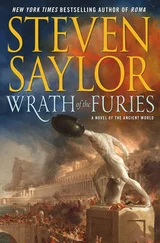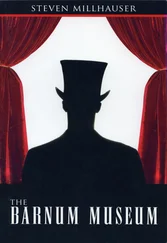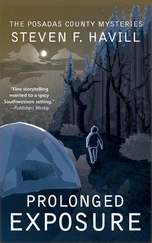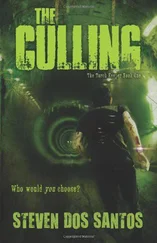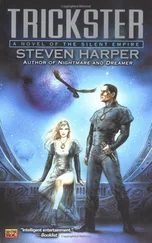Steven Dubner - Freakonomics
Здесь есть возможность читать онлайн «Steven Dubner - Freakonomics» весь текст электронной книги совершенно бесплатно (целиком полную версию без сокращений). В некоторых случаях можно слушать аудио, скачать через торрент в формате fb2 и присутствует краткое содержание. Жанр: Старинная литература, на русском языке. Описание произведения, (предисловие) а так же отзывы посетителей доступны на портале библиотеки ЛибКат.
- Название:Freakonomics
- Автор:
- Жанр:
- Год:неизвестен
- ISBN:нет данных
- Рейтинг книги:3 / 5. Голосов: 1
-
Избранное:Добавить в избранное
- Отзывы:
-
Ваша оценка:
- 60
- 1
- 2
- 3
- 4
- 5
Freakonomics: краткое содержание, описание и аннотация
Предлагаем к чтению аннотацию, описание, краткое содержание или предисловие (зависит от того, что написал сам автор книги «Freakonomics»). Если вы не нашли необходимую информацию о книге — напишите в комментариях, мы постараемся отыскать её.
Freakonomics — читать онлайн бесплатно полную книгу (весь текст) целиком
Ниже представлен текст книги, разбитый по страницам. Система сохранения места последней прочитанной страницы, позволяет с удобством читать онлайн бесплатно книгу «Freakonomics», без необходимости каждый раз заново искать на чём Вы остановились. Поставьте закладку, и сможете в любой момент перейти на страницу, на которой закончили чтение.
Интервал:
Закладка:
An analysis of the entire Chicago data reveals evidence of teacher cheating in more than two hundred classrooms per year, roughly 5 percent of the total. This is a conservative estimate, since the algorithm was able to identify only the most egregious form of cheating—in which teachers systematically changed students’
answers—and not the many subtler ways a teacher might cheat. In a recent study among North Carolina schoolteachers, some 35 percent of the respondents said they had witnessed their colleagues cheating in some fashion, whether by giving students extra time, suggesting answers, or manually changing students’
answers.
What are the characteristics of a cheating teacher? The Chicago data show that male and female teachers are about equally prone to cheating. A cheating teacher tends to be younger and less qualified than average. She is also more likely to cheat after her incentives change. Because the Chicago data ran from 1993 to 2000, it bracketed the introduction of high-stakes testing in 1996. Sure enough, there was a pronounced spike in cheating in 1996. Nor was the cheating random.
It was the teachers in the lowest-scoring classrooms who were most likely to cheat. It should also be noted that the $25,000 bonus for California teachers was eventually revoked, in part because of suspicions that too much of the money was going to cheaters.
Not every result of the Chicago cheating analysis was so dour. In addition to detecting cheaters, the algorithm could also identify the best teachers in the school system. A good teacher’s impact was nearly as distinctive as a cheater’s.
Instead of getting random answers correct, her students would show real improvement on the easier types of questions they had previously missed, an indication of actual learning. And a good teacher’s students carried over all their gains into the next grade.
Most academic analyses of this sort tend to languish, unread, on a dusty library shelf. But in early 2002, the new CEO of the Chicago Public Schools, Arne Duncan, contacted the study’s authors. He didn’t want to protest or hush up their findings. Rather, he wanted to make sure that the teachers identified by the algorithm as cheaters were truly cheating—and then do something about it.
Duncan was an unlikely candidate to hold such a powerful job. He was only thirty-six when appointed, a onetime academic all-American at Harvard who later played pro basketball in Australia. He had spent just three years with the CPS—and never in a job important enough to have his own secretary—before becoming its CEO. It didn’t hurt that Duncan had grown up in Chicago. His father taught psychology at the University of Chicago; his mother ran an afterschool program for forty years, without pay, in a poor neighborhood. When Duncan was a boy, his afterschool playmates were the under-privileged kids his mother cared for. So when he took over the public schools, his allegiance lay more with schoolchildren and their families than with teachers and their union.
The best way to get rid of cheating teachers, Duncan had decided, was to readminister the standardized exam. He only had the resources to retest 120
classrooms, however, so he asked the creators of the cheating algorithm to help choose which classrooms to test.
How could those 120 retests be used most effectively? It might have seemed sensible to retest only the classrooms that likely had a cheating teacher. But even if their retest scores were lower, the teachers could argue that the students did worse merely because they were told that the scores wouldn’t count in their official record—which, in fact, all retested students would be told. To make the retest results convincing, some non-cheaters were needed as a control group. The best control group? The classrooms shown by the algorithm to have the best teachers, in which big gains were thought to have been legitimately attained. If those classrooms held their gains while the classrooms with a suspected cheater lost ground, the cheating teachers could hardly argue that their students did worse only because the scores wouldn’t count.
So a blend was settled upon. More than half of the 120 retested classrooms were those suspected of having a cheating teacher. The remainder were divided between the supposedly excellent teachers (high scores but no suspicious answer patterns) and, as a further control, classrooms with mediocre scores and no suspicious answers.
The retest was given a few weeks after the original exam. The children were not told the reason for the retest. Neither were the teachers. But they may have gotten the idea when it was announced that CPS officials, not the teachers, would administer the test. The teachers were asked to stay in the classroom with their students, but they would not be allowed to even touch the answer sheets.
The results were as compelling as the cheating algorithm had predicted. In the classrooms chosen as controls, where no cheating was suspected, scores stayed about the same or even rose. In contrast, the students with the teachers identified as cheaters scored far worse, by an average of more than a full grade level.
As a result, the Chicago Public School system began to fire its cheating teachers.
The evidence was only strong enough to get rid of a dozen of them, but the many other cheaters had been duly warned. The final outcome of the Chicago study is further testament to the power of incentives: the following year, cheating by teachers fell more than 30 percent.
You might think that the sophistication of teachers who cheat would increase along with the level of schooling. But an exam given at the University of Georgia in the fall of 2001 disputes that idea. The course was called Coaching Principles and Strategies of Basketball, and the final grade was based on a single exam that had twenty questions Among the questions:
How many halves are in a college basketball game?
1. 1
2. 2
3. 3
4. 4
How many points does a 3-pt. field goal account for in a basketball game?
1. 1
2. 2
3. 3
4. 4
What is the name of the exam which all high school seniors in the State of Georgia must pass?
1. Eye Exam.
2. How Do the Grits Taste Exam.
3. Bug Control Exam.
4. Georgia Exit Exam
In your opinion, who is the best Division I assistant coach in the country?
1. Ron Jirsa.
2. John Pelphrey.
3. Jim Harrick Jr.
4. Steve Wojciechowski
If you are stumped by the final question, it might help to know that Coaching Principles was taught by Jim Harrick Jr., an assistant coach with the university’s basketball team. It might also help to know that his father, Jim Harrick Sr., was the head basketball coach. Not surprisingly, Coaching Principles was a favorite course among players on the Harricks’ team. Every student in the class received an A. Not long afterward, both Harricks were relieved of their coaching duties.
If it strikes you as disgraceful that Chicago schoolteachers and University of Georgia professors will cheat—a teacher, after all, is meant to instill values along with the facts—then the thought of cheating among sumo wrestlers may also be deeply disturbing. In Japan, sumo is not only the national sport but also a repository of the country’s religious, military, and historical emotion. With its purification rituals and its imperial roots, sumo is sacrosanct in a way that American sports can never be. Indeed, sumo is said to be less about competition than about honor itself.
It is true that sports and cheating go hand in hand. That’s because cheating is more common in the face of a bright-line incentive (the line between winning and losing, for instance) than with a murky incentive. Olympic sprinters and weightlifters, cyclists in the Tour de France, football linemen and baseball sluggers: they have all been shown to swallow whatever pill or powder may give them an edge. It is not only the participants who cheat. Cagey baseball managers try to steal an opponent’s signs. In the 2002 Winter Olympic figure-skating competition, a French judge and a Russian judge were caught trying to swap votes to make sure their skaters medaled. (The man accused of orchestrating the vote swap, a reputed Russian mob boss named Alimzhan Tokhtakhounov, was also suspected of rigging beauty pageants in Moscow.) An athlete who gets caught cheating is generally condemned, but most fans at least appreciate his motive: he wanted so badly to win that he bent the rules. (As the baseball player Mark Grace once said, “If you’re not cheating, you’re not trying.”) An athlete who cheats to lose, meanwhile, is consigned to a deep circle of sporting hell. The 1919 Chicago White Sox, who conspired with gamblers to throw the World Series (and are therefore known forever as the Black Sox), retain a stench of iniquity among even casual baseball fans. The City College of New York’s championship basketball team, once beloved for its smart and scrappy play, was instantly reviled when it was discovered in 1951 that several players had taken mob money to shave points—intentionally missing baskets to help gamblers beat the point spread. Remember Terry Malloy, the tormented former boxer played by Marlon Brando in On the Waterfront? As Malloy saw it, all his troubles stemmed from the one fight in which he took a dive. Otherwise, he could have had class; he could have been a contender.
Читать дальшеИнтервал:
Закладка:
Похожие книги на «Freakonomics»
Представляем Вашему вниманию похожие книги на «Freakonomics» списком для выбора. Мы отобрали схожую по названию и смыслу литературу в надежде предоставить читателям больше вариантов отыскать новые, интересные, ещё непрочитанные произведения.
Обсуждение, отзывы о книге «Freakonomics» и просто собственные мнения читателей. Оставьте ваши комментарии, напишите, что Вы думаете о произведении, его смысле или главных героях. Укажите что конкретно понравилось, а что нет, и почему Вы так считаете.

